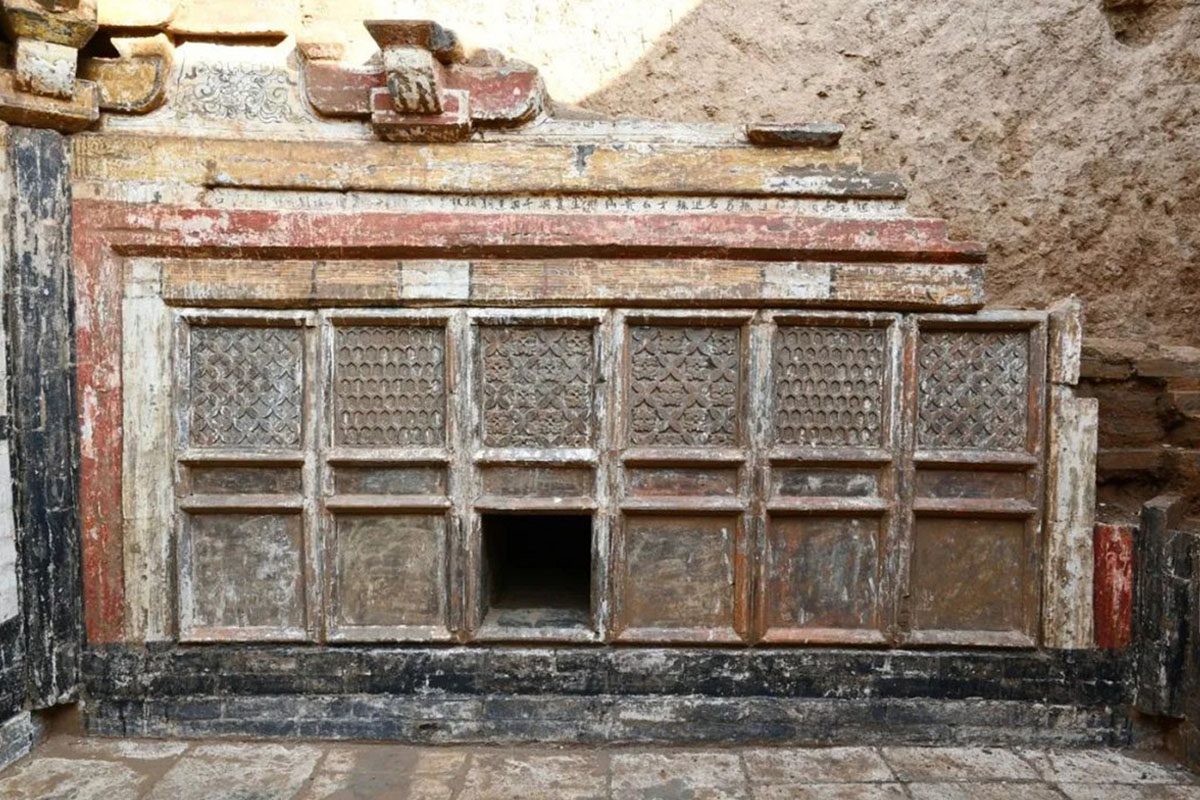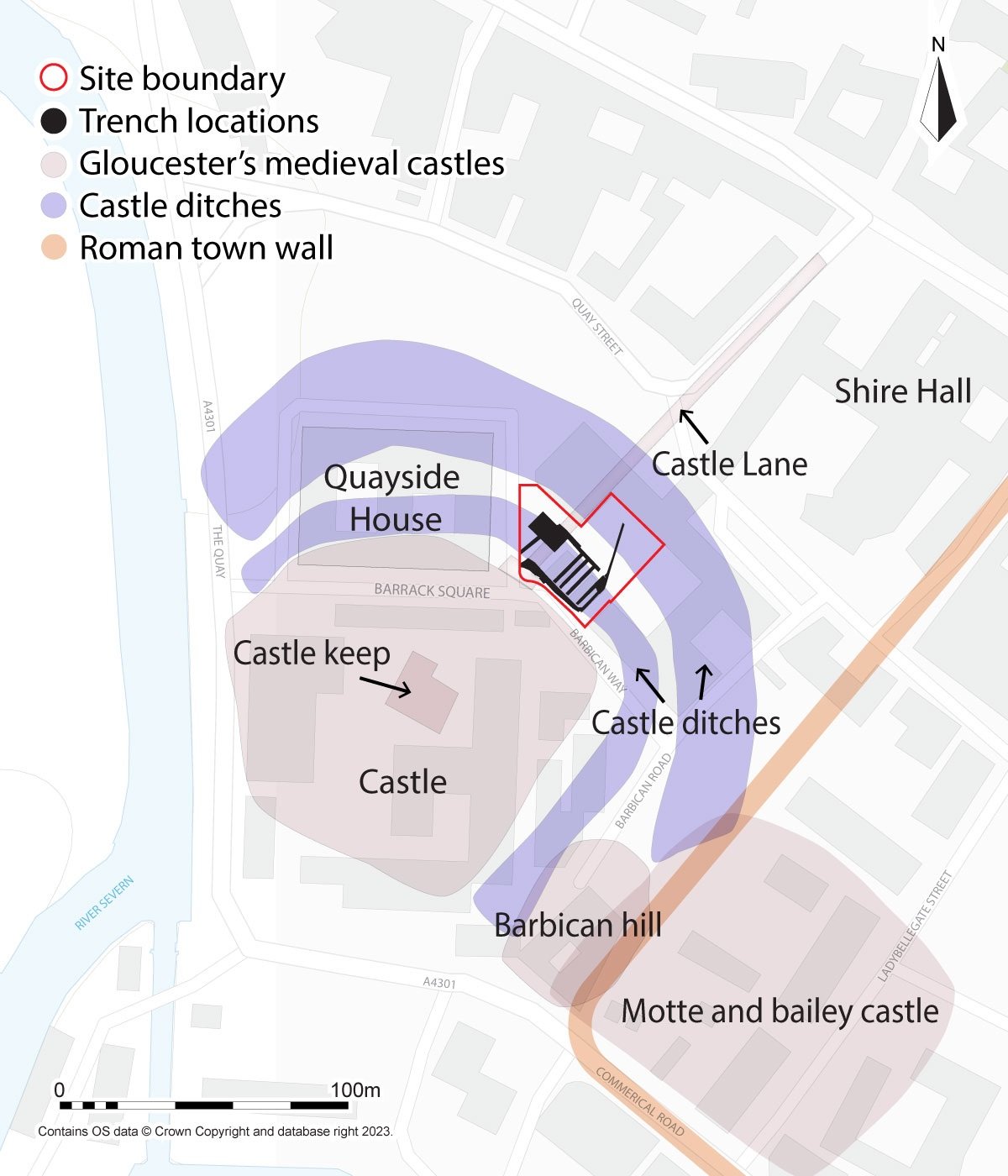Archaeology
Ornate Jin Dynasty tombs found in Changzhi city

Archaeologists from the Changzhi Archaeological Research Institute have uncovered three decorated Jin Dynasty tombs in Changzhi city, China.
The tomb was first discovered in November 2023, with the results of the excavation now published by the Shanxi Institute of Cultural Relics and Archaeology.
According to the researchers, the site consists of three brick-chamber tombs that date from the Jin Dynasty, an imperial dynasty of China that existed between AD 1115 and 1234.
Image Credit : Shanxi Institute of Cultural Relics and Archaeology
During the Jin dynasty’s rule, its emperors embraced Han customs and reinforced the Great Wall to defend against the rising Mongol Empire. Additionally, the Jin dynasty facilitated various internal cultural developments, including the revival of Confucianism.
The three tombs are located in Qiangcheng village in Changzhi’s Lucheng district, however, they were found in varying degrees of looting and damage.
According to the researchers, the walls of the tombs are decorated with murals showing human depictions and flora, and have characteristics and architectural styles typical of the Jin period.
Image Credit : Shanxi Institute of Cultural Relics and Archaeology
Tomb M19 and Tomb M20 have brick-carved arches, doors, windows, figures and floral patterns, and inscriptions that describe events from history. Tomb M21 is more distinct among the three tombs, and has chamber walls that imitate a wooden structure.
Speaking to ChinaDaily: “The tombs reflect traditional Chinese culture, social ethics, ancient architectural characteristics, tomb architecture and funeral customs, providing new materials and insights for the study of ancient tomb culture and archaeological history.”
Header Image Credit : Shanxi Institute of Cultural Relics and Archaeology
Sources : ChinaDaily
This content was originally published on www.heritagedaily.com – © 2023 – HeritageDaily
Archaeology
Archaeologists excavate medieval timber hall
Archaeologists from the University of York have returned to Skipsea in East Yorkshire, England, to excavate the remains of a medieval timber hall.
Recent excavations unearthed a timber hall measuring 5 metres wide by 16 metres long, which was surrounded by a large ditched enclosure.
The size and shape of the hall is marked by post holes, which the team plan to excavate further to provide new insights into the hall’s purpose and setting in the surrounding landscape.
The hall sits adjacent to a 13-meter-high mound, once presumed to be a motte and bailey castle. However, carbon dating has since revealed its age to be 1,500 years prior to the Norman Conquest era from during the Iron Age.
Dr Jim Leary, from the University of York’s Department of Archaeology, said: “The unearthing of timber buildings dating to the period between the collapse of the Roman Empire and the arrival of the Vikings, a time often referred to as the Dark Ages, is an incredibly rare and significant find.
“The discovery at Skipsea is particularly interesting because we know that the area was in the hands of the last Anglo-Saxon King of England, Harald Godwinson, and then later, after the Norman Conquest of 1066, it became the estate centre of the Lords of Holderness.”
Skipsea was once home to three freshwater lakes, Skipsea Bail Mere, Skipsea Low Mere, and Skipsea Withow Mere, linked to the River Hull through a network of tributaries. These lakes (long-vanished), began 10,000 years ago during the Mesolithic period, and continued into the medieval period.
The lakes were a constant draw to population groups throughout history, which has provided archaeologists with Mesolithic stone tools, animal remains, bone harpoons, and Bronze Age buildings and trackways.
Header Image Credit : University of York
Sources : University of York
This content was originally published on www.heritagedaily.com – © 2023 – HeritageDaily
Archaeology
Archaeologists find traces of Gloucester’s medieval castle

Archaeologists from Cotswold Archaeology have uncovered traces of Gloucester’s medieval castle in Gloucester, England.
The castle was first constructed during the Norman period as a simple motte and bailey. Over the centuries, various additions and periods of reconstruction extended the footprint of the castle, which by the 13th century became a royal residence for nobility and English kings.
Between the 15th century and 17th century, the castle went into decline and much of the stonework from the fortifications were used to construct roads and buildings within the city centre, leaving only the keep which was used as a gaol (prison).
In time, the keep was considered to be unsuitable and its demolition began in 1787, leaving no visible remains of the castle.
Image Credit : Cotswold Archaeology
During development works in the south-west of Gloucester city centre, archaeologists from Cotswold Archaeology have uncovered traces of the castle beneath the basketball court of the former HMP Gloucester.
A number of trenches revealed medieval structural remains that archaeologists have interpreted as forming part of a masonry causeway or bridge structure. This provided access to the castle across its inner defensive ditch and continued north-east onto Castle Lane.
Excavations also found subsequent demolition and robbing of stonework, evidenced by the infilled castle ditch, and comprised cultivation soils of the Castle Gardens, which occupied this area from the later 18th century through to the mid-19th century.
In addition, a stretch of Post-medieval wall relating to the gardens was identified, which corresponds to a boundary shown on early and mid-19th century maps.
According to the archaeologists: “The results highlight that significant archaeology continues to survive at a relatively shallow depth, enabling us to trace historic land use and landscape change within this part of the city across many centuries.”
Header Image Credit : Cotswold Archaeology
Sources : Cotswold Archaeology
This content was originally published on www.heritagedaily.com – © 2023 – HeritageDaily
-

 Ghosts2 years ago
Ghosts2 years agoZozo: The Ouija Board Demon
-

 Space2 years ago
Space2 years agoScientists claim to have found the answer what existed before the Universe
-

 Ghosts2 years ago
Ghosts2 years agoOld Coot of Mount Greylock
-
Archaeology1 year ago
New discoveries at Ekʼ Balam during conservation works
-

 General3 years ago
General3 years agoUC San Francisco engaging in horrifying experiments, organ harvesting of live babies in the name of “science”
